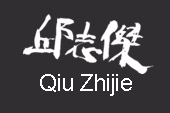| |
|
Guo Xiaoyan
In the history of the West, the body has been conceptualized within philosophy and theology, and not only in medicine and science. Yet the body itself, regardless of whatever intellectual analysis is employed to understand it, is also a specific object that can extricate itself from cognition and intentionality. Contemplating the body is not only necessary for shifts within philosophy, but also is the starting point for aesthetic creation. In other words, learning from philosophers and appropriating philosophical ideas have became important aspects of Qiu Zhijie's art. In communicating with other disciplines to invent new experiences, aesthetics is also a means of acquiring a deeper understanding of Qiu Zhijie's creativity.
Friedrich Nietzsche was the first philosopher to explore what a philosophy of the body might be at the level of aesthetic experience. “Fundamentally, it begins with the body and uses it as a guiding thread. The body however is a fruitful entity, a fruitfulness of various phenomena that transcends spiritual beliefs” . Since Nietzsche, philosophy no longer considers the appearance of the body as a philosophical concept and physiological structure. Instead, the “explosion” and “derivation” of the “intention of the body” has become a display of the active body itself. The body has become a surface free from its deeper layers, like Gilles Deleuze's reference to Michel Foucault's later theoretical emphasis on “subjectification” . As such, when Deleuze discusses the strong emphasis on “ subjectification ” in Foucault's later works, he writes that “‘subjectification' creates fundamentally new possibilities for life. As Nietzsche would put it, this establishes a form of life that can be called genuine and authentic, which originates in a life-oriented aesthetic. ” Therefore, “subjectification” is not merely the movement of the anatomical body itself, but also aesthetics. It is a way to invigorate the self through artistic creativity. (As the poet Paul Valery once said, “The most profound is skin” . )
As for Qiu Zhijie's thinking and creativity, the body is the internal starting ground. Although his work does not involve freeing all of the potential meanings of the body, it does explore new concepts. “Bodily Resistance” , as proposed by the artist, allows writing's “anti-thinking” to be realized. Nietzsche reminds us of two points: First, consent to the “multiplicity” of the body's experience; and second, difference must be recognized. For Qiu Zhijie, the body is not natural, but “an internal field of varying desires” . The body tries its luck as it recalls its various identities through memory, joy and conviction. What Qiu Zhijie wishes to illuminate via this contestation of the body's limitations is the possibility of freedom of thought. Similarly, in the early 1990s, Qiu Zhijie reflected on “anti-individualism” in his work through eliminating all personal symbols, in order to exemplify the unreliability of the individual. In the Tattoo series, the character bu ( 不 ) , written very large in red, is painted on his body and the background along with other symbols. Without discussing the meaning of, or the growth and decline of the actual body, the red characters layering over the body already seem to signal the body's undertaking of political language and its conspicuous display of resistance.
Another aspect of Qiu Zhijie's work is his investigation of rules. His work reveals how to examine and visualize those thoughts, behaviors, ideologies, and mythical narratives that manipulate people, with the aim of making them recognizable and thus enabling revision. Around 1994, his work further emphasized the manipulability of the body in reality, for instance, th e Fine , Cut-Out , and Measured Bodies series, in which the body is fixed with plaster, etc.
The body is always intertwined with society — it could change society or be changed by society. It can take advantage of society or be taken advantage of. It can control society or be controlled. Paul Valery's claim that “The most profound is skin” implies that the surface of the body is not only a smooth skin, but also the mark of a complex society. Bodily resistance thus situates the body at the center of both thought and action.
Martin Heidegger, Nietzsche (Vol. 1) , Chinese trans. Sun Zhouxing, the Commercial Press : Beijing, 2002, p.153
Gilles Deleuze, Deleuze on Foucault , Chinese trans. Yang Kailin, Jiangsu Education Publishing House, 2001, p.105-106
|
